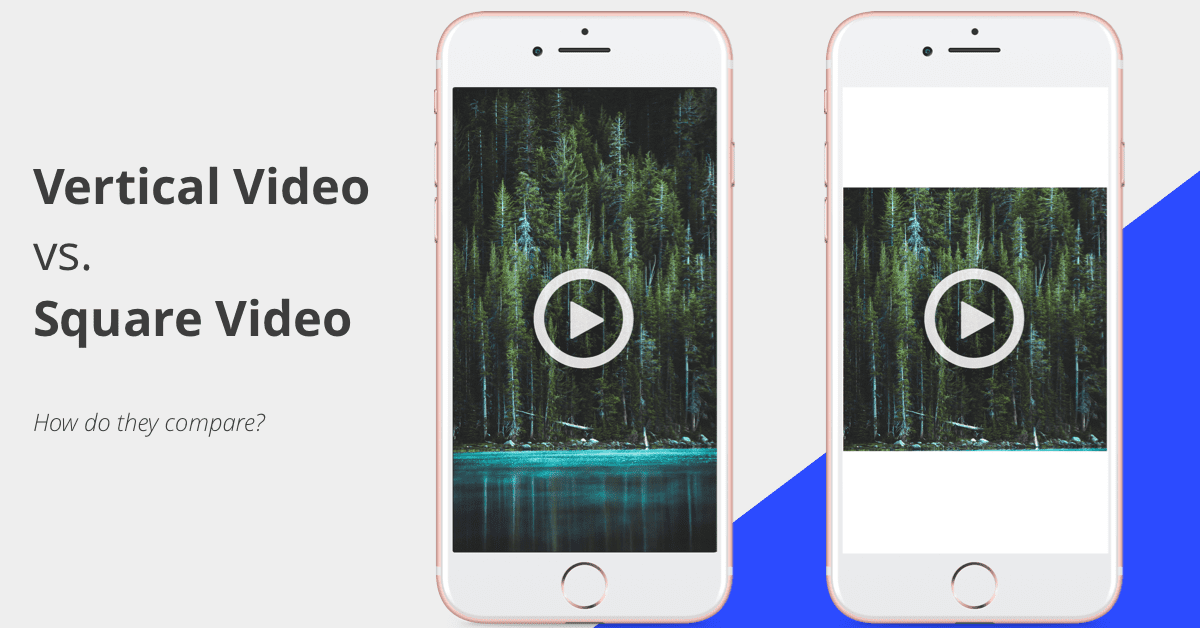How Brands Can Take Advantage
With nearly half of the world’s population having a smartphone in their pocket, the mass consumption of pocket-sized video grown. With that, vertical video has gone from an awkward aspect ratio to a mainstream media style practically overnight. Research has shown that we hold our phones vertical 94% of the time, while mobile has become the preferred device to watch short-form video.
Facebook, Instagram and YouTube have embraced vertical video formats in recent years. The newer generation of social media apps, like Snapchat and Tik Tok, use vertical video almost exclusively. There is now even a vertical film festival for creators pushing new boundaries, and Samsung launched a television recently that can rotate from horizontal to portrait for what they call millennial or gen z minded audiences.
Vertical video has won so much that Samsung recently made a concert stage optimised for your phone.
What is it?
Vertical video (also known as “portrait mode” video) comes in a few shapes and sizes, but generally, it means a video with an aspect ratio of 9:16. The aspect ratio describes the relationship of video width to video height. In vertical videos, the video is taller than it is wide.
In short, this means vertical video provides more pixel ‘real estate’ to deliver a message, and this is of particular interest for brand and advertising.
Traditional 16:9 video (left) 4:5 video (middle) and 9:16 vertical video (right)
How are brands using it?
While Facebook hosts a variety of aspect ratios, it has fully embraced the format primarily due to increased engagement rates with mobile viewers. When Facebook A/B tested vertical video against square ratio video using the same creative, video length, targeting, budget and bid, they discovered that vertical resulted in brand lift 70% of the time. Viewers even reported an increase in ad recall of between 3 and 9%.
What’s even more interesting is how it changes how we watch video ads. In the Facebook test, 70% of video watch time, including video ads, was with the sound turned on. Typically Facebook mobile viewers prefer muted video. However, full-screen vertical is engaging enough to encourage audio. And Facebook isn’t alone in their findings.
An independent test by Annenberg Media found that vertical video reached more people on Facebook than both square and horizontal formats and increased engagement.
In another recent study by Buffer & Animoto, they found vertical video advertising out-performed all other social formats considerably providing better bang for the buck.
So, long or short?
In a recent study from Social Bakers, they found the first 30s of long vids were completed 16.4% of the time and horizontal ones 13.4%, compared to 14.9% and 12.5% for medium-length videos.
Videos shorter than 30 seconds were completed by far the most often (29.9% for vertical and 22.2% for horizontal). Across the board, vertical performed better than horizontal videos.
Now We Collide embraced vertical in a recent project for Facebook Australia and used these insights to develop a marketing strategy that was vertical video first. We used stories, a vertical video format across Facebook and Instagram, to build awareness and drive traffic to the Facebook Gift Guide, showcasing the significant economic impact of Facebook on small businesses in Australia.
The creative strategy was designed to maximise the full-frame vertical with set design, art direction and camera setup all designed for the portrait format. “It is a great example of how clever vertical content can be effective in connecting with an audience to drive a business objective,” says Ryan Bodger Chief Creative Officer, Now We Collide.
See Gift Guide case studies here:
2018: https://nowwecollide.com.au/our-work/facebook-annual-gift-guide
2019: https://nowwecollide.com.au/our-work/facebook-giftguide-2019
Vertical Video Advertising is one of the biggest opportunities for brands and business in 2020 and beyond. Now We Collide offer consultation to determine how it could help your brand grow. Please contact us to find out more info@nowwecollide.com.au
++++
Written by Ryan Bodger, Chief Creative Officer at Now We Collide, an independent creative agency based in Sydney, Australia. We use insights, strategy and clever, creative thinking to produce contagious advertising campaigns and content for today's connected brands and consumers.
